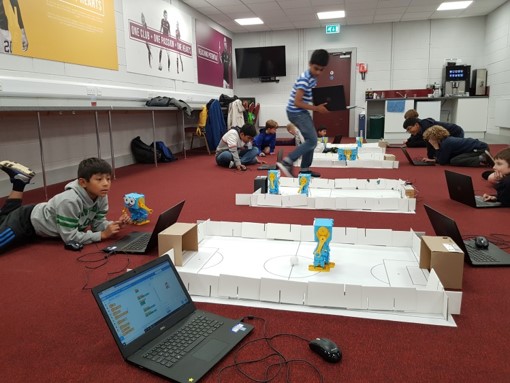From being a student to being a teacher of Apps for Good
Because the students have ownership over their ideas they are able to speak really confidently about them”
Tanya supported other students at her school with their Apps for Good classwork and now is delivering the Apps Development course herself with Heart of Midlothian Innovation Centre. They aim to introduce young people to technology through their passion for sport. We talked with Tanya about the impact Apps for Good has had on her career, and also the creative ways they are delivering the course.
How did you become involved with Apps for Good?
When I was in sixth year at high school, we used to do in-class support in our free period. I knew I wanted to study Computer Science at university so I often sat in on those classes. One day my teacher (Chris Aitken) came and said you have to sit in on this class, and it was one of the first Apps for Good sessions that Wick had run. One class was all it took for me to become hooked and want to be more involved. It was amazing seeing how the kids came up with their ideas.
What has your Apps for Good journey been?
Well, after that one class I continued to help support in the classroom and help the teams with their projects. I think it was really useful having someone who wasn’t a teacher in the room to help with brainstorming their ideas. Apps for Good is a creative course and at the time it wasn’t like anything else that we had at school, it was a completely new way of thinking for students, me included.
Now 10 years on, I am delivering the Apps for Good Apps Development course at Heart of Midlothian Football Club. We’re delivering it through the Innovation Centre at the stadium, which is in a very challenging area with high unemployment. We want to open kids' eyes to the possibilities of technology and by being associated with football we can bring in sports scientists to show them how they use technology in their careers. They can make apps like fitness trackers, it all goes to show how you can work in sport without being on the pitch.
What’s been the hardest part about setting up the course?
Honestly? Deciding what courses to include. It was easy to set up and you can see from the website how long everything is going to take. I was able to chat with Natalie about whether or not we were able to enter the competition (which we are!). It was simple and felt like we could ask for support if we needed it.

What would you say has been the biggest change in your students since you started teaching the course?
When I was at school and supporting the Wick teams through the Apps for Good courses, we could always see at the end of it how the confidence had grown in the students. They’d be presenting to experts, with complete passion and because they had ownership over their ideas they were able to speak really confidently about them.
We had just started to deliver the course at the Innovation Centre before the country went into lockdown, and opted to pause it until just recently. We had only had a few sessions but I could see already that the girls had gone from being quite shy and quiet to being able to express themselves in the sessions. They’ve been emailing us desperate to start up the sessions again!
How has Apps for Good impacted your career?
One of the experts that we had supporting us at Wick was Bob Schukai, he arranged for me to do a work placement at Thomson Reuters for the summer. I ended up in London for two months and then again the following year for three months. It was an incredible experience that I wouldn’t have got without Apps for Good’s Experts Community.
We are celebrating a decade of Apps for Good, if you enjoyed this we have lots more for you to explore on our 10 years page, and here on our blog.